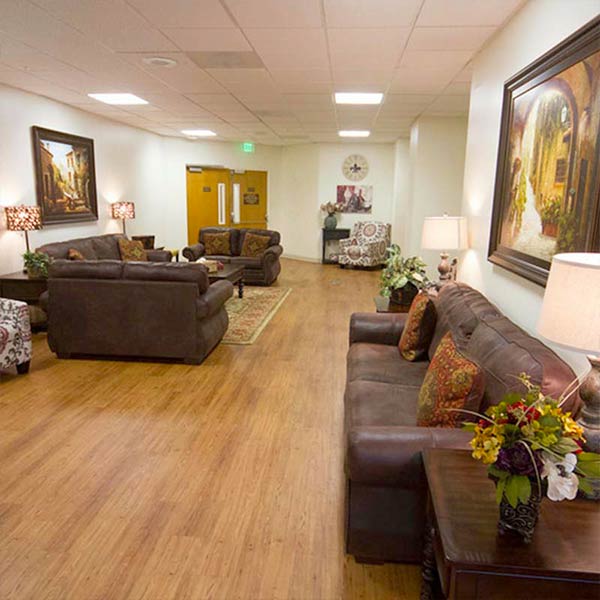Understanding Bipolar Disorder
Learn More About Bipolar Disorder
While everyone experiences mood fluctuations, people who have bipolar disorder experience these emotions to the extreme. Previously known as manic-depression, bipolar disorder is a mental health disorder associated with extreme mood swings that range from the deep lows of depression to the incredible highs of mania. During a depressive phase, a person may experience sadness, hopelessness, and have trouble fulfilling their responsibilities at home, work, or school. While in the throes of a manic episode, people who have bipolar disorder may feel full of energy, euphoria, and engage in risky behaviors. These shifts in mood may only happen several times a year, or, in the case of people with rapid-cycling bipolar disorder, several times a day. Some people may experience a mixed state, a combination of both manic and depressive symptoms at the same time, which can be highly dangerous. There are three types of bipolar disorder:
Bipolar I disorder is considered to be the most severe form of bipolar disorder as it causes mood swings that significantly impact a person’s job, school, and relationships. Manic episodes in bipolar I disorder can be dangerous and highly severe.
Bipolar II disorder is less severe than bipolar I in that the symptoms still exist, but are significantly milder than the ones experienced by people with bipolar I. The symptoms of bipolar II are also predominantly more depressive in nature and, rather than experiencing full-blown mania, people with bipolar II experience hypomania, which is significantly less severe. Individuals suffering from bipolar II can usually maintain a normal, daily routine.
Cyclothymic disorder, or cyclothymia, is the mildest form of bipolar disorder. People with cyclothymic disorder experiences patterns of mood disturbances that can include alternating periods of mild or moderate depression and hypomania. People suffering from this disorder will experience symptoms less often and in a much less severe manner than individuals with bipolar I and bipolar II.
Statistics
Statistics of Bipolar Disorder
Bipolar disorder is the sixth leading cause of disability in the world. In adults living in the United States, bipolar disorder affects about 5.7 million people, which is the equivalent of about 2.6% of the population. The median age of onset is 25 years, although bipolar disorder can begin in early childhood or later adulthood. In the United States, bipolar disorder appears to affect 1% of adolescents between the ages of 14 and 18.
Causes & Risks
Causes and Risk Factors for Bipolar Disorder
The precise cause for the development of bipolar disorder remains unknown, however, there appear to be several factors that are involved in triggering the onset of bipolar disorder. The most commonly cited causes and risk factors for bipolar disorder include:
Genetic: Children of people who have bipolar disorder are at an elevated risk for developing the disorder themselves. When one parent has bipolar disorder, a child faces a 15% to 30% risk of developing the disorder. When both parents have the disorder, this risk increases to 50% to 75%.
Physical: While the significance remains unclear, neuroimaging studies of the brain of individuals who have bipolar disorder appear differently than studies done on individuals without the disorder. Additionally, when levels of neurotransmitters, which are naturally-occurring chemical messengers within the brain, are imbalanced, bipolar disorder may result.
Environmental: There are numerous environmental factors that some professionals believe can trigger bipolar disorder. Extreme amounts of stress, a history of abuse, and other intensely traumatic events may play a role in the development of bipolar disorder.
Risk Factors:
- Hormonal imbalances
- Family history of mental illness
- Drug or alcohol abuse
- Being in your early 20s
Signs & Symptoms
Signs and Symptoms of Bipolar Disorder
The precise symptoms of bipolar disorder will vary based upon age, individual differences, co-occurring disorders, and the presence of any addiction to drugs or alcohol. Signs and symptoms of bipolar disorder are broken down by manic or depressive episodes and may include:
Mania (or hypomania) symptoms:
- Euphoria
- Increased self-esteem
- Poor judgment
- Rapid speech
- Racing thoughts
- Agitation and irritation
- Increased physical activity
- Risky and reckless behaviors
- Spending sprees and other unwise financial choices
- Increased drive to achieve and surpass goals
- Increased sex drive
- Decreased need for sleep
- Increased distractibility
- Careless and dangerous use of drugs or alcohol
- Frequent absences from work or school
- Psychosis – a break in reality
- Poor academic and/or occupational functioning
- Aggressive behaviors
- Explosive tempers and destructive outbursts
- Rapid shifts in mood
Depressive symptoms:
- Sadness
- Hopelessness
- Anxiety
- Guilt
- Trouble sleeping
- Changes in appetite
- Fatigue
- Loss of interest in previously-enjoyable activities
- Trouble concentrating
- Chronic pain without known cause
- Frequent absences from work or school
- Poor academic or occupational functioning
- Suicidal thoughts and behaviors
- Psychosis
- Many physical complaints (including tiredness, stomachaches, headaches)
- Increased irritability
- Social isolation
- Extreme sensitivity to rejection or failure
Effects
Effects of Bipolar Disorder
While bipolar disorder is a life-long condition, through the usage of medication and therapeutic interventions, it can be successfully managed. Unfortunately many people who have bipolar disorder do not receive the care they need. When left untreated, the effects of bipolar disorder can be devastating. Common effects of untreated bipolar disorder may include:
- Drug and alcohol abuse and addiction
- Legal problems
- Financial problems
- Trouble with interpersonal relationships
- Loneliness and isolation
- Poor performance in work or school
- Frequent absences from work or school
- Self-harming behaviors
- Suicide
Co-Occurring Disorders
Co-Occurring Disorders & the Complexity of Bipolar Disorder
Bipolar disorder often occurs with other types of mental health disorders. It is vital that both conditions be treated at the same time . The most common co-occurring conditions include:
- Post-traumatic stress disorder (PTSD)
- Conduct disorder
- Intermittent explosive disorder (IED)
- Oppositional defiant disorder (ODD)
- Social phobia
- Obsessive-compulsive disorder (OCD)
- Generalized anxiety disorder
- Attention-deficit/hyperactivity disorder (ADHD)
- Substance abuse and addiction








